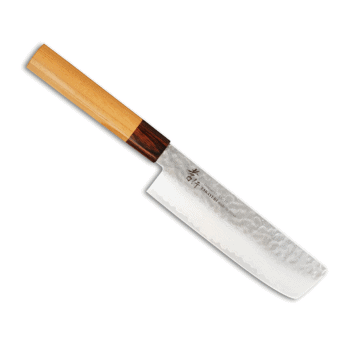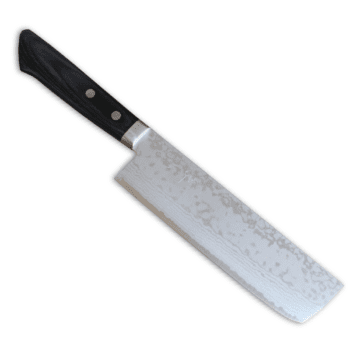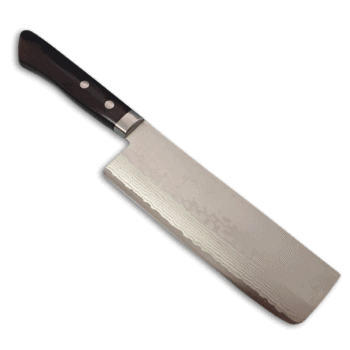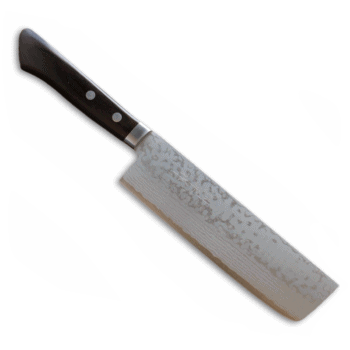Nakiri / Usuba
Nakiri and usuba knives are types of Japanese kitchen knives that are specifically designed for cutting vegetables. They are both similar in that they have a straight, rectangular blade with a sharp, thin edge, but they differ in the way the blade is ground.
Nakiri knives have a double-bevel edge, meaning that both sides of the blade are ground to a sharp edge. This allows for easy and efficient cutting of vegetables, as the user can push and pull the knife through the food in a straight line. Nakiri knives are also typically thinner and lighter than usuba knives, making them easier to handle and maneuver.
Usuba knives can have either a single-bevel edge or a double-bevel edge. Usuba knives with a single-bevel edge are typically used by professional chefs in Japan and are prized for their ability to make precise, thin cuts and for their clean, even slices. They are often used for tasks such as julienning and chiffonading and are considered a key tool in the Japanese kitchen. Usuba knives with a double-bevel edge, on the other hand, are more similar to Western chef’s knives in terms of their versatility and use. They are typically easier to use and more suitable for a wider range of tasks, including chopping, dicing, and mincing. Double-beveled usuba knives are often preferred by home cooks and professional chefs outside of Japan due to their versatility and ease of use.
Overall, both nakiri and usuba knives are excellent tools for cutting and preparing vegetables, and they are an essential part of any Japanese kitchen.
Showing all 5 resultsSorted by price: high to low




